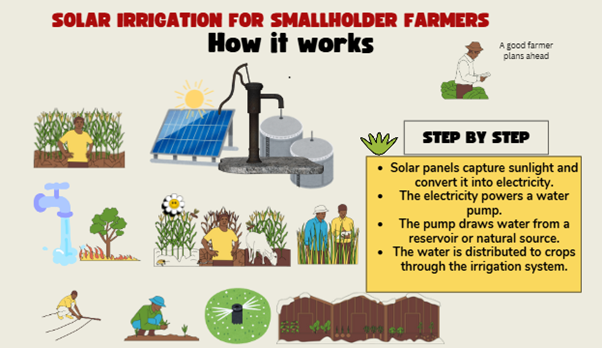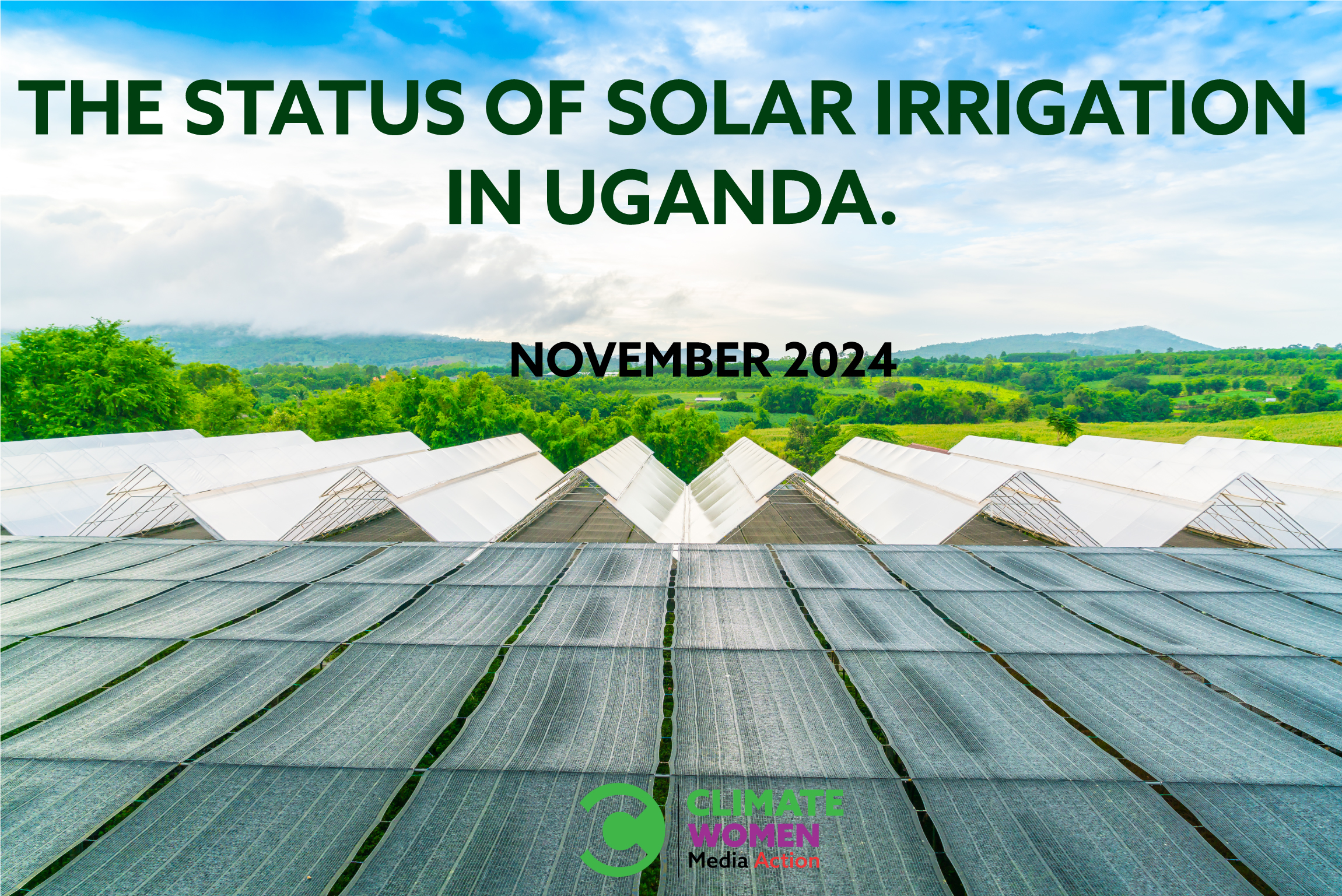By Climate Women Media Action
Did you know?
- Agriculture employs 70% of Uganda’s population.
- Agriculture contributes a quarter of the country’s gross domestic product (GDP).
- Smallholder farmers constitute 89% of the agricultural sector; these are majorly women and youth.
- Constantly powered irrigation farms guarantee shs.5m worth off revenue per acre, per season.
You have probably heard that Uganda is the Pearl of Africa, made up of beautiful hilly country sides, green vegetation, diverse food platters, and sounds of laughing children, beautiful sunsets, happy people and warm brewed beer.
Although Uganda is immensely loaded with abundant fresh water resources and rain fed soils, the recent changes in the weather patterns have increasing swept along erratic rainfall episodes and long term droughts.
Cheers to the sun, Ugandan farmers have now adopted solar powered water pumps to concur these two giant problems: the lack of water infrastructure and increasing climate changes affecting crop productivity and disrupting harvest output.
Why Solar powered irrigation.
- Increased Crop yields
Solar irrigation gives farmers access to water, ensuring that crops are watered as required leading to higher yields and better quality produce. Solar irrigation also enables smallholder farmers to grow high value crops like vegetables thereby generating more income.
- All year round farming.
Solar irrigation increases the number of productive seasons from two to four seasons in a year. Due to availability of reliable access to water, farmers are able to plant consistently throughout the year despite the weather changes. This boosts food security, household incomes and food trade.
- Environmental sustainability.
Solar irrigation systems depend on the energy generated by the sun thereby reducing reliance on fossil fuels thereby lowering greenhouse gasses and environmental pollution.
- Minimises Water wastage.
Solar irrigation ensures drip systems apply precise water levels directly to the roots. Such practices assist farmers to minimise resource waste and promote sustainable green farming.
- Economic empowerment.
As agricultural productivity increases all year round because of the presence of solar irrigation, livelihoods of women and youth are transformed significantly as they make up the biggest percentage of this sector.
- Decision making power.
It gives the farmer autonomy over the process, allowing them to make decisions on the preferred irrigation system, payment method as well as ownership over the equipment as well as the responsibility of maintenance. Providing the farmers with the resources needed to increase production improves smallholder farmer’s livelihoods. Research shows that farmers in urban communities are able to see a 60% reduction on water bills and additionally reduce their carbon footprint.
How does it work?

A pumping system is installed which is responsible for transmitting water from the water source to the irrigation area or farm. Water sources may include wells, rivers, lakes or boreholes or special water sheds depending on what is available and easily accessible to the farmer.
There are different types of pumps and in Uganda farmers have conveniently adopted these three:
Surface Pumps
Surface pumps are usually installed above the water level and are highly recommended for shallow water sources, as they are able to pull water from the source into the system with ease. Farmers whose farms are strategically located near water sources like ponds, lakes and rivers.
Submersible Pumps.
These are typically used for deeper water sources like wells, where the pump may require submerging for it to push and pump the water to the surface. This is common in regions like Teso where underground wells are common.
Solar Powered Pumps.
Solar powered pumps depend on solar panels that do not require batteries but entirely depend on the sun. These pumps are powered by the solar panels and are suitable for micro irrigation projects. Many small scale farmers in Uganda and beyond are utilising these pumps to counter the challenges of climate change impacts like longer dry seasons.
How can farmers access Solar equipment.
Farmers may invest in micro scale irrigation, but it is obvious that short term they may require financial support to access solar equipment, farmers may utilise government subsidies available at the local government agriculture office. These subsidies reduce the cost of such equipment and give farmers a chance to grow and produce more.
Private companies and non-government organisations are running projects that avail farmers with starter pack equipment, along with knowledge on how irrigation can help improve crop productivity and help them earn reasonable income.
A path to sustainable green agriculture.
The term ‘’sustainable agriculture’’ simply refers to an economically and socially supportable agriculture system that enables farms of all sizes to be profitable and contribute to their local economies.
A sustainable agriculture system plays a vital role in making certain the population has enough food while preserving the environment. The aim of sustainable agriculture is meeting the needs of the population and ensuring natural resources are safe for the coming generations.
By utilising solar powered irrigation systems, farmers can ensure more efficient water usage by providing precise control over irrigation systems.
Solar irrigation systems are not only environmentally friendly but also cost effective as farmers don’t have to spend on fuel and there are less maintenance costs.
Overall with Uganda’s growing concerns about water scarcity and climate change, solar powered irrigation is a key ingredient in sustainable agriculture and many more farmers ought to be made aware of the numerous benefits like reducing operational costs, improving crop yields and the high dependence on fossil fuels.
